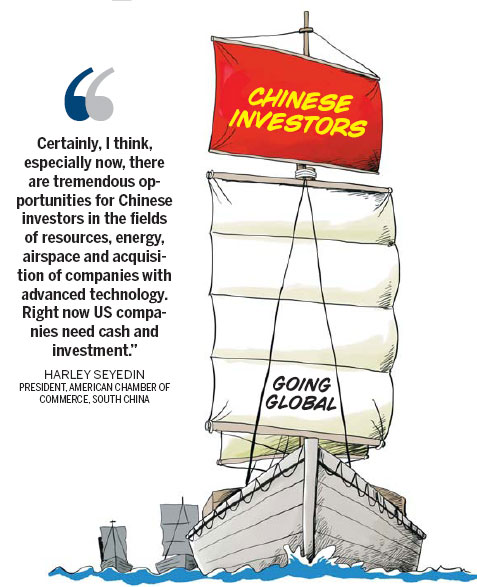Setting sail on a quest for overseas M&As
16 january 2013
China’s rise in the global value chain is inevitable as an increasing number of companies venture out into the wider world alongside hordes of investors, keen to snap up bargains.
|
 |
|
Heading West! This decade will see huge numbers of overseas mergers and acquisitions by Chinese enterprises, so GNP growth might not be necessarily slowing in China’s coastal areas. [Photo/China Daily] |

Although there has been a wave of negative comment about China multinationals Huawei Technologies Co and ZTE Corp in some countries, notably the United States, where they have been accused of being likely to spy for the Chinese government, dampening the momentum of ambitious Chinese investors eyeing overseas markets, many believe the setback is only temporary.
“Isn’t it paradoxical that many of us have learned the news via the Internet, which uses an increasing amount of equipment provided precisely by these two companies?” asked Peter Cheung, a British Chinese living in London.
Being a big fan of Chinese products, Cheung’s home has seen more and more Chinese brands such as Lenovo computers and a Haier fridge in recent years, in addition to other daily necessities made in China.
“The recognition of Chinese brands may be still low here, but you can’t deny the fact that customers are spending more on Chinese products,” said the 33-year-old restaurant owner, adding that many of his friends have started working for Chinese companies.
Earlier, the United Kingdom said it was investigating Huawei’s business in the UK after the world’s second-biggest telecommunications equipment maker announced a 1.2 billion pound ($1.9 billion) investment in Britain aiming to create at least 700 jobs over the next five years, the UK’s Sky News reported.
“The world needs Chinese investment as much as it needs the ‘made in China’ products,” Cheung said.
The trend is reflected in this year’s China International Fair for Investment and Trade, the world’s largest stage for global investment exchange held annually in Xiamen, in East China’s Fujian province, where a “revolution” was under way with the audience taking to the stage.
Traditionally an arena for Chinese projects to compete for the favors of global audiences wanting to invest in the Middle Kingdom, at least in the past 15 years of the fair’s history, more attendees now decided to try to sell their own countries’ projects.
Among them, 12 countries participating in the fair staged a group performance as it moved to its climax.
Henry Qin, executive vice-president of ASP Group, a facilitator of two-way cross-border economic exchanges between China and Australia, was one of the “leading actors” in this show.
“The Chinese economy and that of Australia are highly complementary, especially in the resources area,” Qin said when making a presentation to potential Chinese investors.
He said the mining infrastructure in Australia is relatively underdeveloped because of inadequate investment. China’s demand for resources could provide financial support in that area.
“Combining China’s financial resources with the mineral resources of Australia, we’ll have the chance to establish the most important mining capital market in the world,” Qin said.
Australia has been the top destination for China’s overseas investment since 2005, according to the Heritage Foundation, a United States think tank. Chinese investment in Australia amounted to $38.4 billion by June 2011.
Since November 2011, the Australian government has approved more than 160 projects in the area of resources, with a total investment volume of 60 billion Australian dollars ($62.2 billion), according to Qin.
In addition to Qin, others, including some from India, Russia, Italy and the United States, presented the best and unique opportunities in their countries’ investment environment in the hope of taking a share of a growing Chinese cake in overseas markets.

Recent Comments